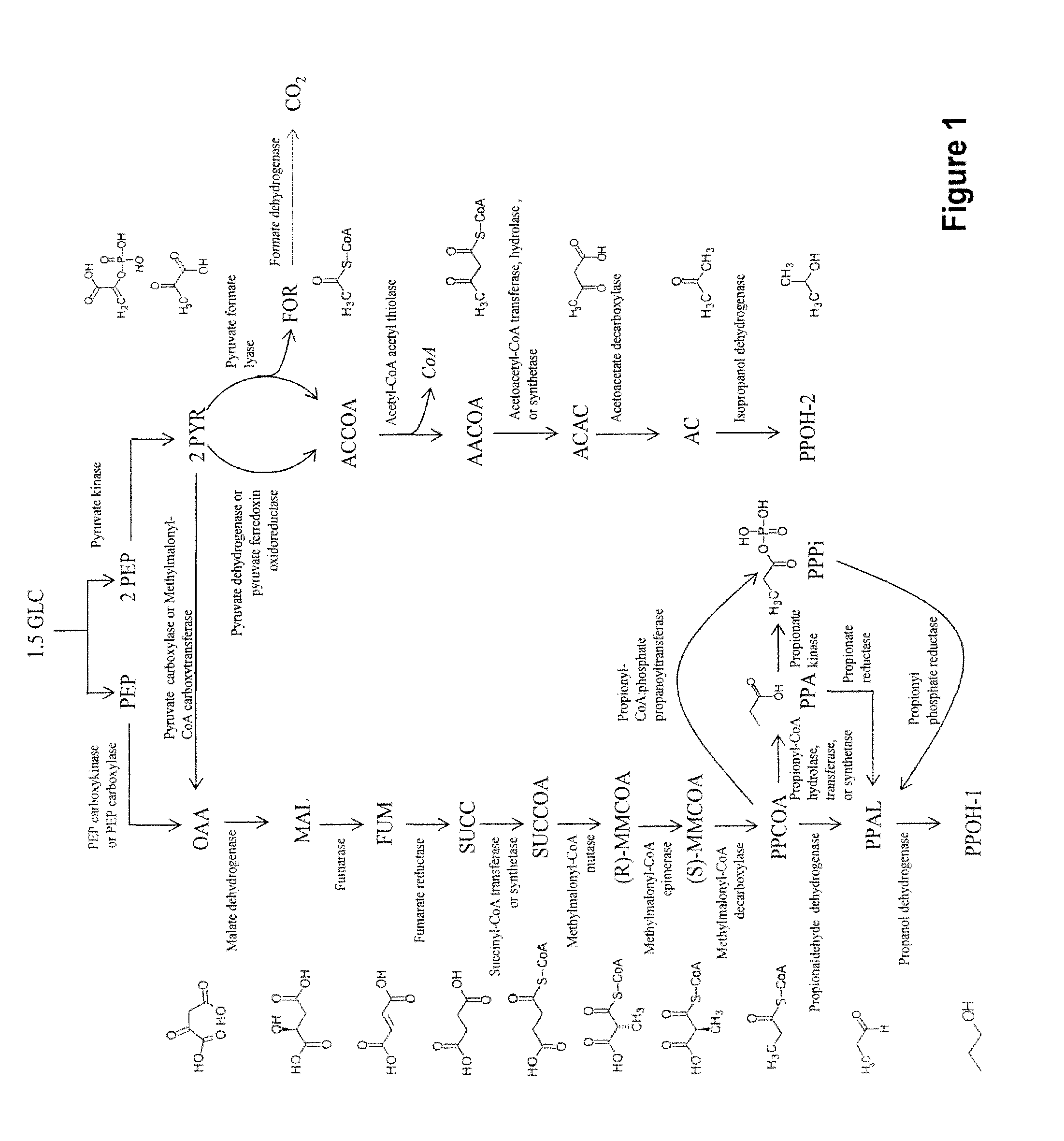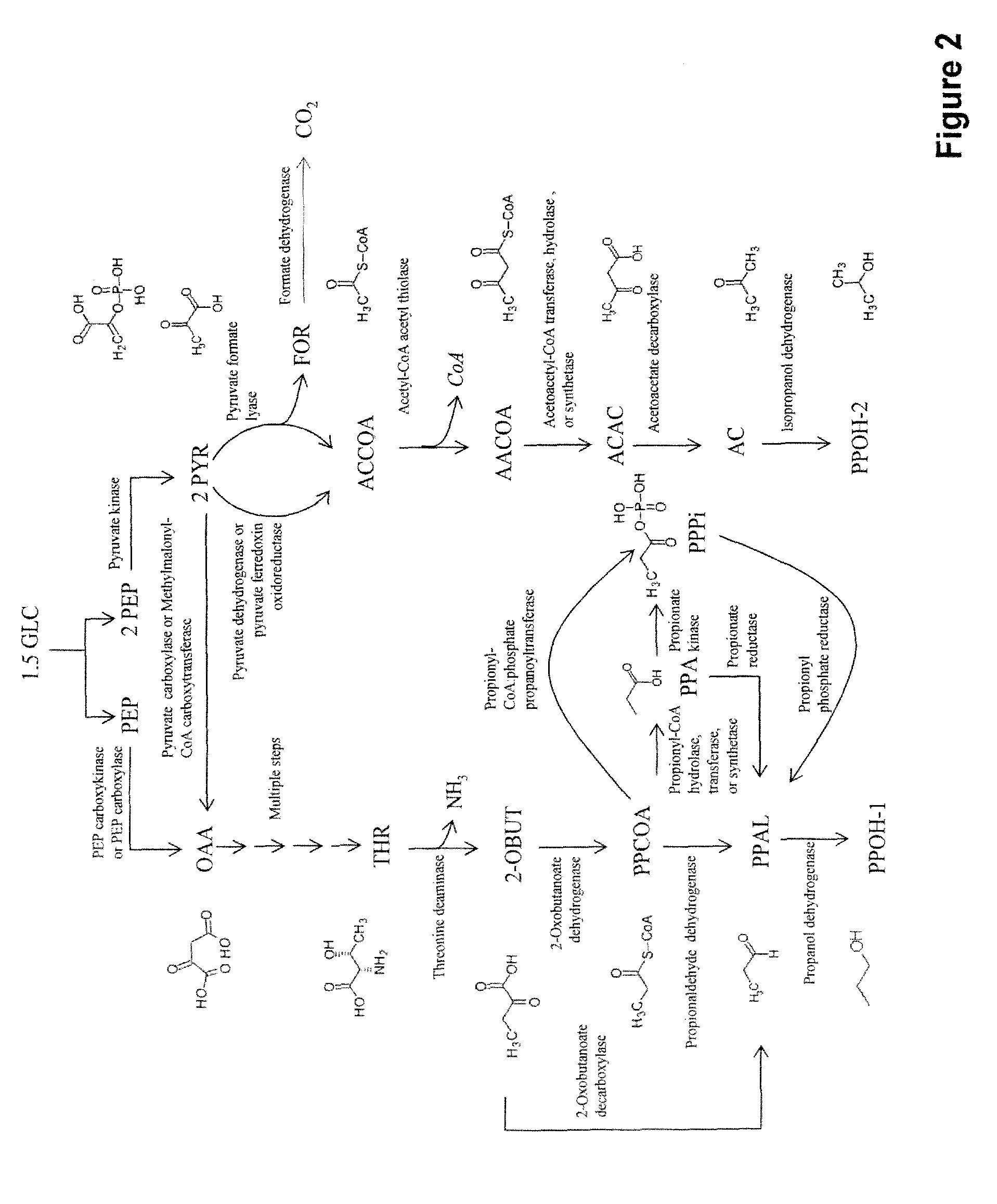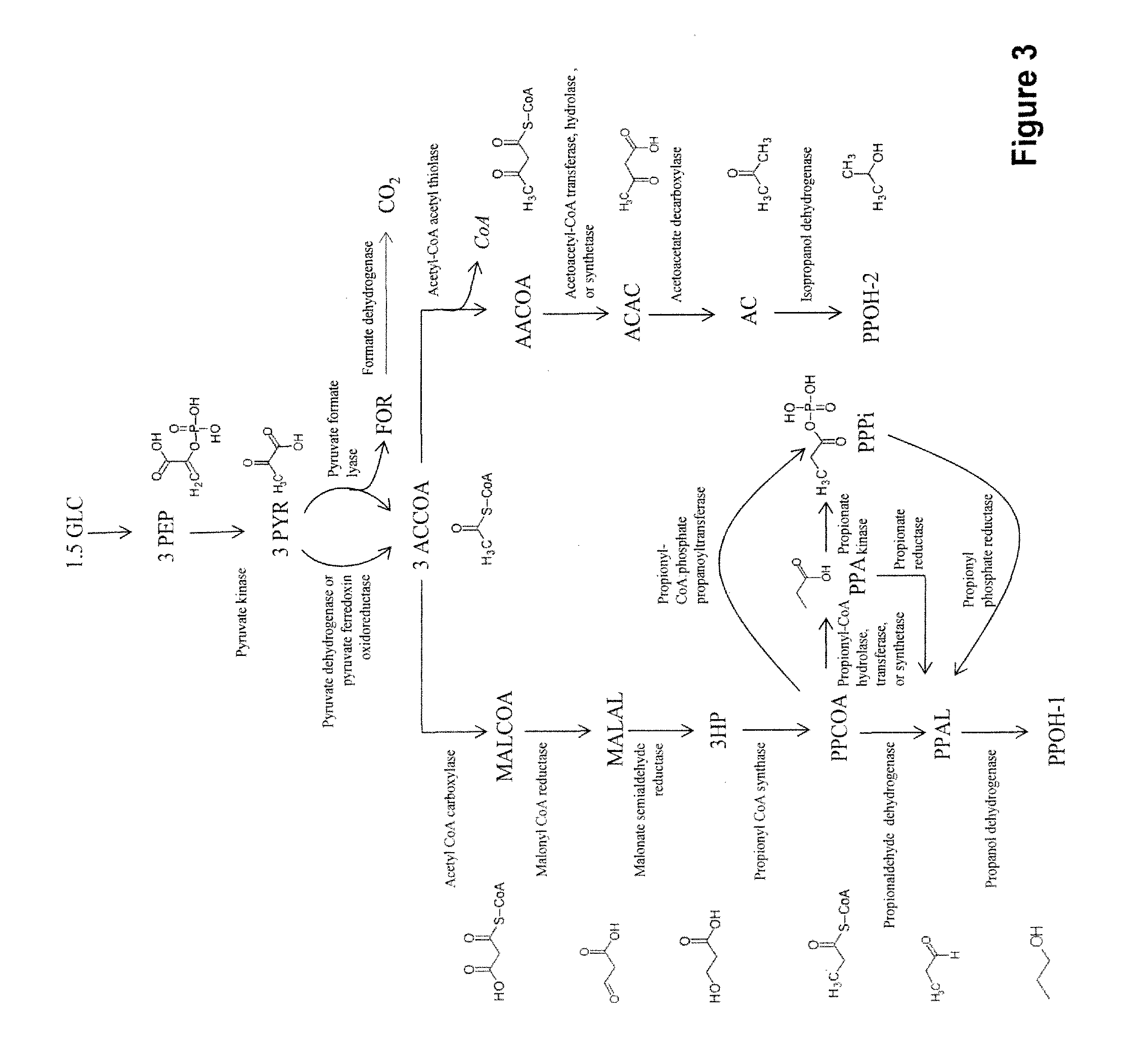Microorganisms and methods for the co-production of isopropanol and 1,4-butanediol
a technology of isopropanol and co-production method, applied in the field of microorganisms, can solve the problems of not being able to produce significant amounts of 1-propanol from sugar, and no existing microorganism has been able to produce significant amounts of maa from sugar
- Summary
- Abstract
- Description
- Claims
- Application Information
AI Technical Summary
Benefits of technology
Problems solved by technology
Method used
Image
Examples
example i
Pathways for Co-Production of N-Propanol and Isopropanol from Glucose
[0300]This example describes exemplary pathways for co-production of n-propanol and isopropanol.
[0301]Novel pathways for co-producing n-propanol and isopropanol and related products are described herein. This invention provides four alternate methods for co-production of n-propanol and isopropanol. The production of isopropanol in E. coli has been described previously (Hanai et al., Appl Environ Microbiol 73:7814-7818 (2007)). Briefly, acetyl CoA is converted into acetoacetyl CoA, transformed into acetoacetate, decarboxylated to form acetone and then reduced to form isopropanol (FIGS. 1-4). The microbial organisms and methods described herein combine this known route with four novel pathways for synthesizing n-propanol. This co-production will provide completely redox balanced routes for production of the C3 alcohols, i.e. n-propanol and isopropanol, allowing for anaerobic production as opposed to the requirement o...
example ii
Pathways for Production of Acetyl-CoA from Glucose
[0379]Further to Example I, the pathway for production of acetyl-CoA from glucose proceeds via phosphoenolpyruvate (PEP) (FIGS. 1-4). Glucose is converted into PEP by the native glycolysis pathway of the microbial organism. PEP is converted to pyruvate by pyruvate kinase and then to acetyl-CoA by pyruvate dehydrogenase or pyruvate ferredoxin oxidoreductase. Alternatively, pyruvate is converted to acetyl-CoA and formate by pyruvate formate lyase. Formate is then converted to carbon dioxide by a formate dehydrogenase that also produces NADH. The acetyl-CoA produced by these pathways are then utilized for production of isopropanol as described in Example I or utilized for production of both n-propanol and isopropanol as described in Example V below (FIG. 3).
Pyruvate Dehydrogenase
[0380]The pyruvate dehydrogenase complex, catalyzing the conversion of pyruvate to acetyl-CoA, has been extensively studied. The S. cerevisiae complex consists ...
example iii
Pathways for Production of Propionyl-CoA from Glucose Utilizing the Reductive TCA Cycle
[0393]Further to Examples I and II, the pathway for production of propionyl-CoA proceeds via oxaloacetate (FIG. 1). PEP is converted into oxaloacetate either via PEP carboxykinase or PEP carboxylase. Alternatively, PEP is converted first to pyruvate by pyruvate kinase and then to oxaloacetate by methylmalonyl-CoA carboxytransferase or pyruvate carboxylase. Oxaloacetate is converted to propionyl-CoA by means of the reductive TCA cycle, a methylmutase, a decarboxylase, an epimerase and a decarboxylase.
PEP Carboxykinase
[0394]Although the net conversion of phosphoenolpyruvate to oxaloacetate is redox-neutral, the mechanism of this conversion is important to the overall energetics of the co-production pathway. The most desirable enzyme for the conversion of PEP to oxaloacetate is PEP carboxykinase which simultaneously forms an ATP while carboxylating PEP. In most organisms, however, PEP carboxykinase s...
PUM
| Property | Measurement | Unit |
|---|---|---|
| boiling point | aaaaa | aaaaa |
| temperature | aaaaa | aaaaa |
| time | aaaaa | aaaaa |
Abstract
Description
Claims
Application Information
 Login to View More
Login to View More - R&D
- Intellectual Property
- Life Sciences
- Materials
- Tech Scout
- Unparalleled Data Quality
- Higher Quality Content
- 60% Fewer Hallucinations
Browse by: Latest US Patents, China's latest patents, Technical Efficacy Thesaurus, Application Domain, Technology Topic, Popular Technical Reports.
© 2025 PatSnap. All rights reserved.Legal|Privacy policy|Modern Slavery Act Transparency Statement|Sitemap|About US| Contact US: help@patsnap.com



